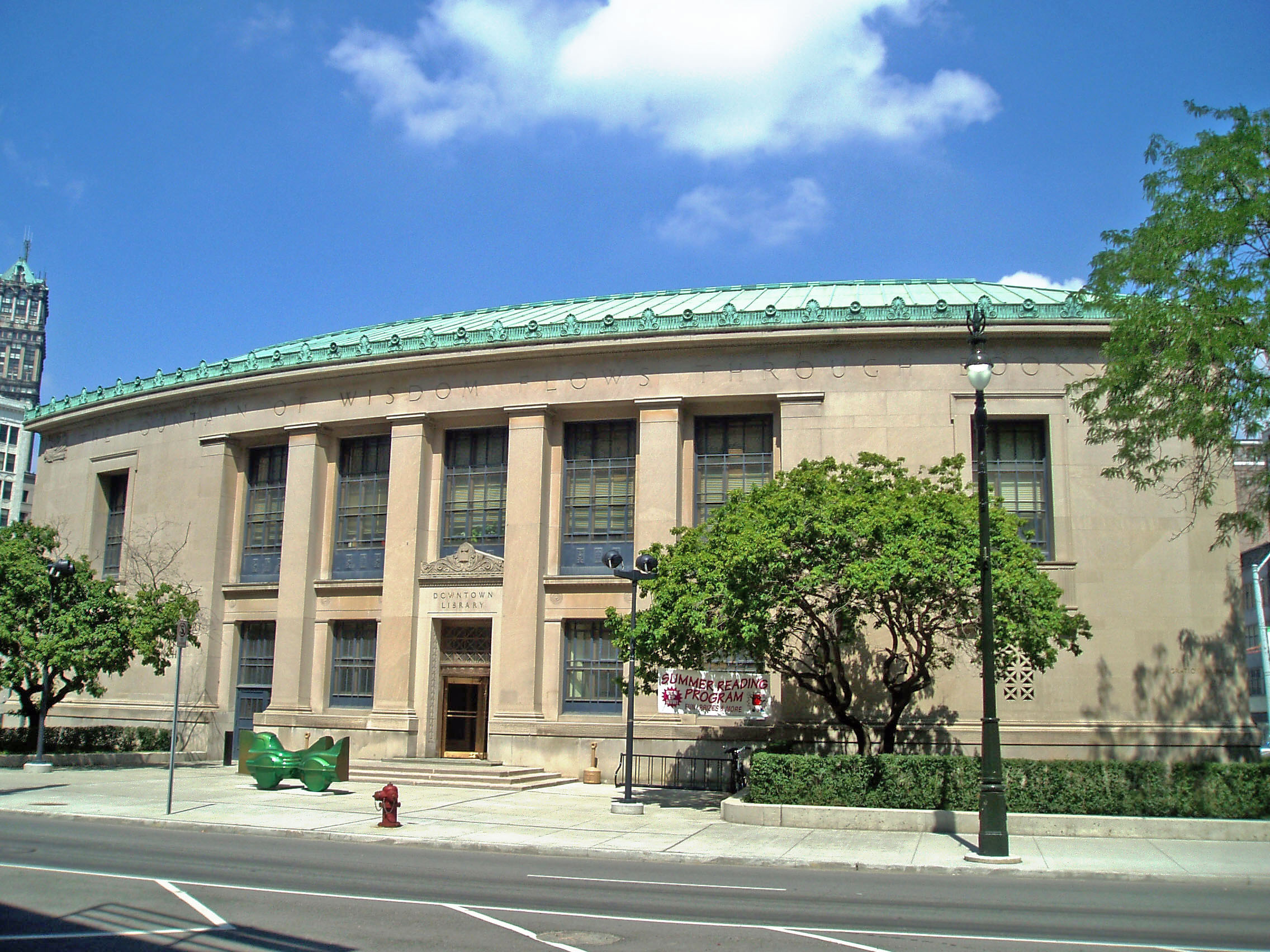

Augustus Woodward’s plan for the city of Detroit created
some unusually shaped blocks. This one, bounded by Gratiot, Library
and Farmer, is one
of many unusual and non-rectangular blocks in Detroit’s downtown area. In the prosperous 1920s,
when Detroit was the nation’s fastest growing large city, municipal revenues
allowed for the building of several new libraries. This is one of the most attractive. It is a spectacular beautiful building with an important collection of historical documents.
The Smith, Hinchman and Grylls firm faced a challenge capitalizing upon this
unusual space. They also needed to make a choice about architectural style. Should
this be a classical building resembling the library Cass Gilbert designed for
the city’s Cultural Center, or should it
reflect the then increasingly popular Art Deco movement? When you look at the
library and let your imagination run,
you will see both classical and Art Deco influences.
This library houses the National Automobile History Collection. If you wish to
conduct scholarly work on the history of vehicle firms in the United States,
or
if you wish to ascertain a specific fact about some make or model of vehicle,
you may be a visitor to the collection housed in this attractive building. In
the late Nineteenth Century, the Detroit Public Library began collecting information
about the vehicle industry and then, over the years, expanded their materials.
This includes many promotional brochures, advertisements published by the producers
themselves, and four very large collections of photographs related to the auto
industry.
As Detroit was going through its economic travails in the late Twentieth Century,
this lovely library was closed in 1998. There was even discussion of razing the
building just about the time the nearby massive J. L. Hudson Department store
was blown up. The Skillman family amassed their wealth through ownership of Minnesota
Mining and Manufacturing—the industrial conglomerate that may be best known
for Scotch Tape. The foundation, founded by Ruth and Robert Skillman in 1960 and with headquarters in one of the
Renaissance Towers, decided to invest in this important and significant building.. In August, 2000, the Skillman Foundation appropriated five
million dollars for the renovation of this library. Those funds were supplemented
by monies from other sources and in 2003, the restored library opened its doors.
Interestingly, the same architectural firm that completed the original building
in 1932 was selected for the remodeling some seventy years later. Detroit has quite a number of impressive library buildings, including the Detroit Public Library in the Cultural Center that Cass Gilbert designed. This Skillman Branch ranks among the most interesting and significant libraries in this country.
In recent years, the Skillman Foundation has devoted much of its support to improving the quality of life for the residents of the city of Detroit. They appropriated one hundred million dollars in a ten-year Good Neighborhoods Program in which they seek to improve schools, improve health and help home owners in six Detroit neighborhoods: Brighton, Chadney/Condon, Cody/Rouge, Northend, Osborn and the Vernor neighborhood in southwest Detriot.
Architect: Smith, Hinchman and Grylls
Architectural style: Classical with some Art Deco touches
Date of opening: January 4, 1932
Architect for Remodeling: The Smith Group
Date of reopening: December 1, 2003
Website for the library: http://www.detroitpubliclibrary.org/branch/skillman
Website for National Automobile History Collection: http://www.detroitpubliclibrary.org/branch/national-automotive-history-collection
Website for the Skillman Foundation: http://www.skillman.org/
City of Detroit Local Historic District: Not listed
State of Michigan Registry of Historic Places: Not listed
National Register of Historic Sites: Not listed
Use in 2005: Public library
Photograph: Ren Farley, July 5, 2005
Description updated: February 20, 2009